Manage Barges
- In Freight Transport - Sea Barge Model, the barges are under direct management of the Transporter
Locate barge list
- Navigate to Transportation > Vehicle List tab
- This tab lists all barges under the management of your organization
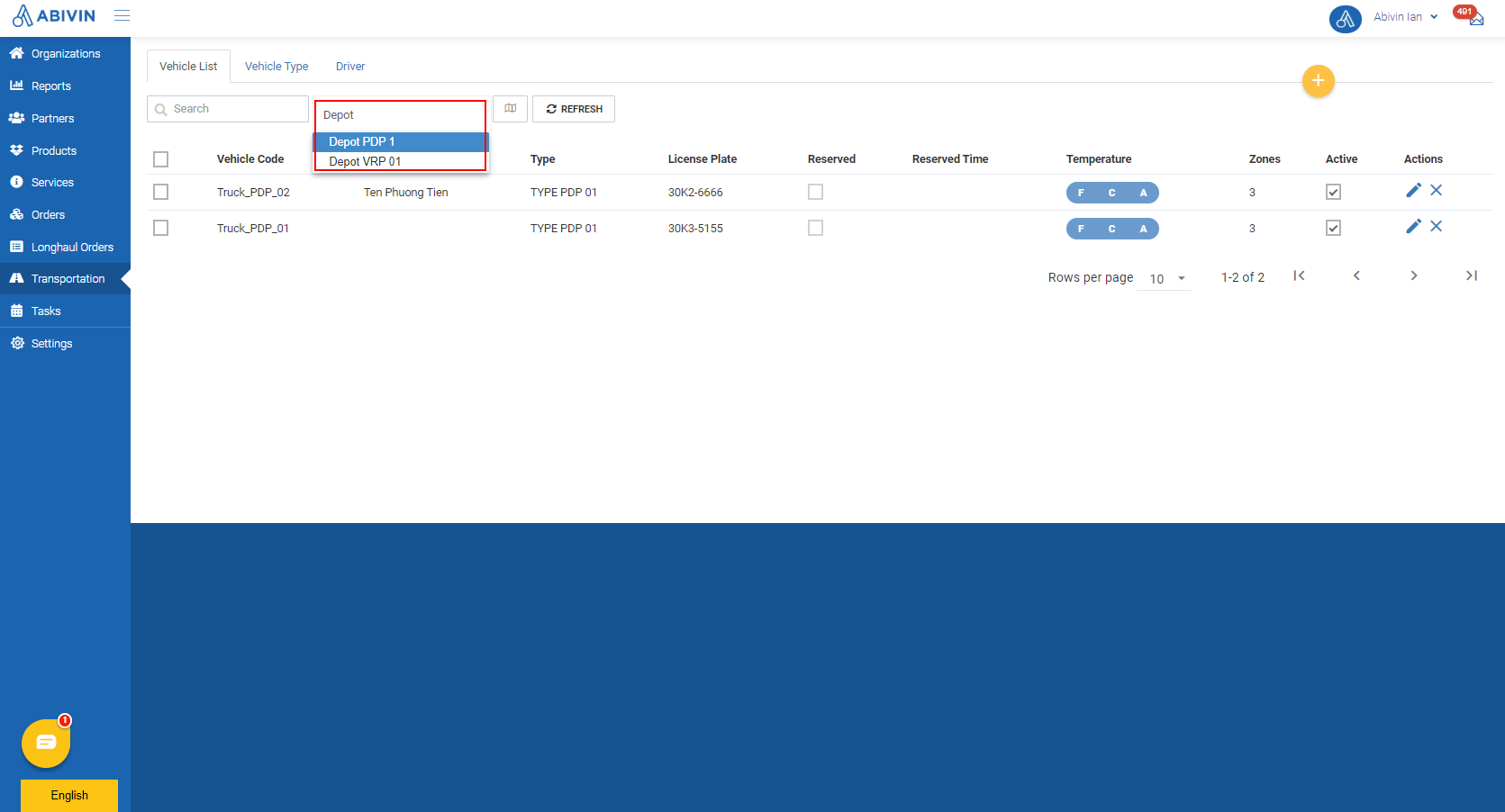
Create barges
Barge information fields
- Below is the list of all information fields of a barge
Apart from the information fields mentioned below, other information fields can be left blank during the creation/editing process
Information field | Description & Input |
|---|---|
Organization (Web form); Organization Code (Excel template) (Required) | 1. Description: |
Vehicle Type | 1. Description: |
Vehicle Name | 1. Description: |
License Plate | 1. Description: |
Vehicle Code | 1. Description: |
Temperature | 1. Description: |
Temp Zone | 1. Description: |
Volume (Web form); Capacity Volume (m3) (Excel template) | 1. Description: |
Weight (Web form); Capacity Weight (kg) (Excel template) | 1. Description: |
Gross weight | 1. Description: |
Real weight | 1. Description: |
Start time; Stop time | Note: Even though being required, this information field is only effective in VRP model |
Lunch start time; Lunch stop time | Note: Even though being required, this information field is only effective in VRP model |
Speed | 1. Description: |
Cost per km | 1. Description: |
Fixed Cost | 1. Description: |
Vehicle Identification Number | 1. Description: |
Vehicle Engine Number | 1. Description: |
Vehicle Internal Code | 1. Description: |
Vehicle Description | 1. Description: |
Default driver | 1. Description: |
Location | 1. Description: |
Device ID (IMEI) | 1. Description: |
Registration Date | 1. Description: |
Active | 1. Description: |
Draught | 1. Description: |
Create single barge using Web form
- Please refer to the CRUD functions article to know the general steps about creating single object using web form
- Note:
- During the creation process, the Organization and Vehicle Type fields must be input first
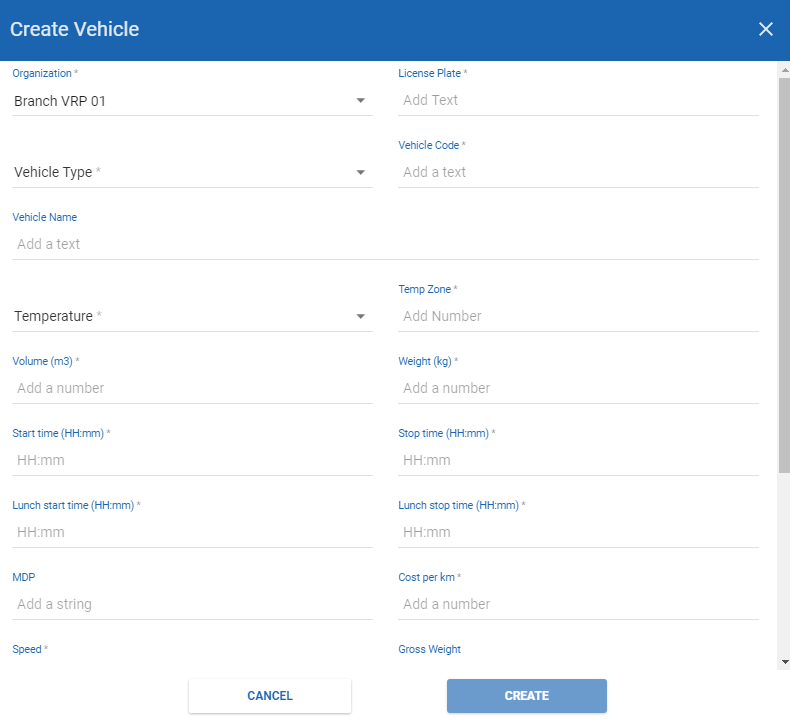
Create multiple barges using Excel template
- Please refer to the CRUD functions article to know the general steps about creating multiple objects using Excel template
Store IMEI/MAC address of the barge's equipped mobile device
- As have been mentioned, in this model, each barge will be equipped a mobile device (A tablet to be specific). The barge captains will receive and submit shipment tasks on the equipped tablet instead of their smartphones. On Web app, the dispatcher can track the current location of the barges via the GPS information of the equipped tablets. The Web dispatcher first need to store the IMEI/MAC address of each barge's equipped tablet
- First, the Web dispatcher needs to decide whether to manage the barge's tablet by IMEI or MAC Address by doing the following:
- Navigate to the tab Organizations > Organizations
- Click Edit icon of the Transporter
- On the form More Configurations, navigate to the sub-tab Mobile. In the section Shipment Device ID Type, select between the two values IMEI or MAC Address. Click Save to confirm the change
- Next, navigate to the tab Transportation > Vehicle
- Click Edit icon of each barge
- On the form Update Vehicle, scroll down until you see the field Device ID (IMEI or MAC Address). Input either the IMEI or MAC Address of the barge's equipped tablet into this field accordingly to the setting you chose earlier at the Transporter. Click Save to confirm the change
- Repeat the above step for the remaining barges
- IMPORTANT NOTE Always take the device MAC Address
- If the barges are managed by MAC Addresses, then you must store the default device MAC Addresses for the barges, as well as set the MAC Address setting of the mobile devices to device MAC instead of randomized MAC. During the input process, please note that the letters in the MAC Address must be input in uppercase
- The instruction on how to setup the mobile devices and get the MAC Address can be found in this article: Freight transport - Sea Barge Model - Mobile app
Update barge information
- Please refer to the CRUD functions article to know the general steps about updating objects in Abivin vRoute
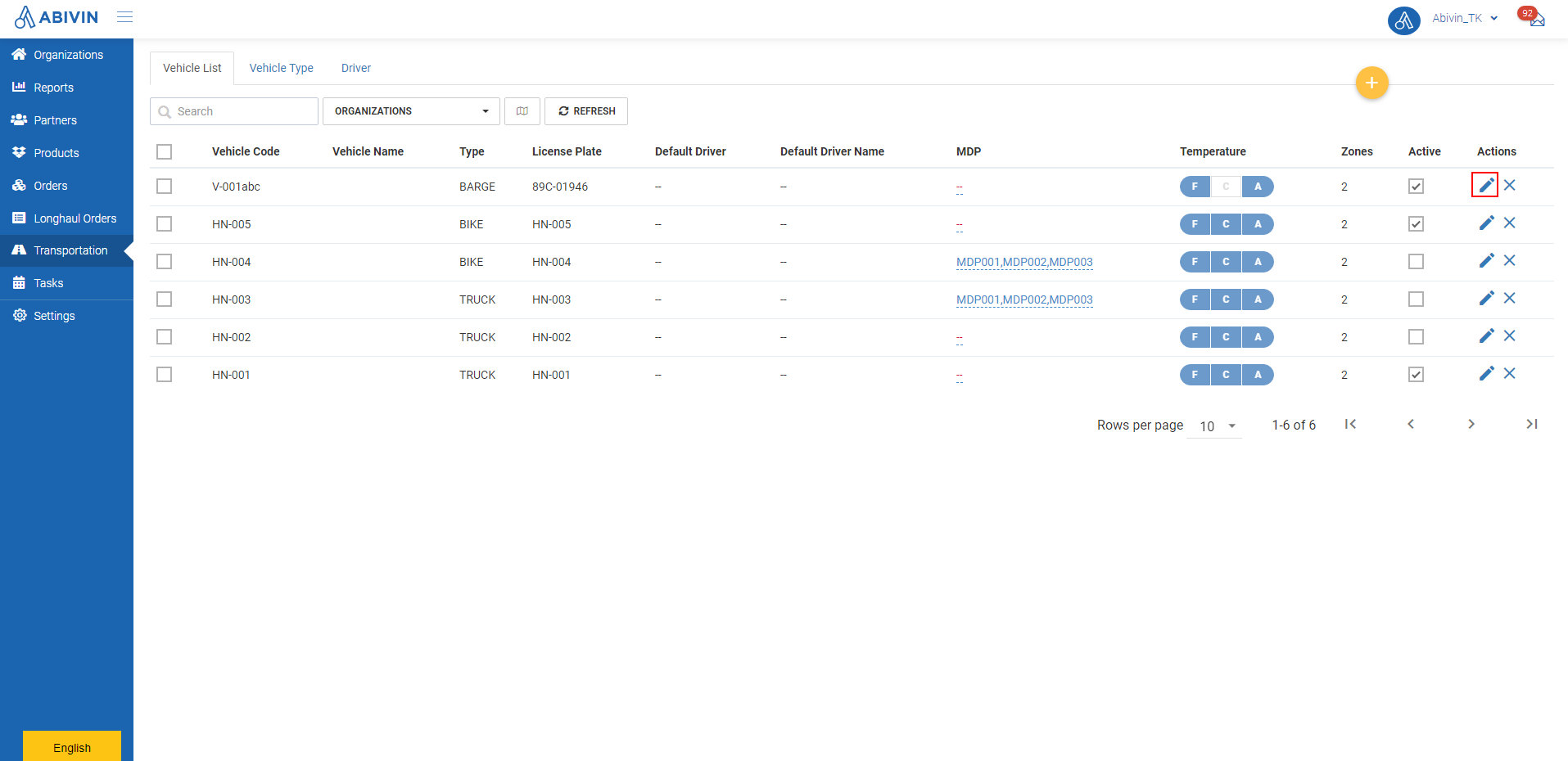
Delete barges
- Please refer to the CRUD functions article to know the general steps about deleting objects in Abivin vRoute

Change Barge Active Status
- By default, all barges will have their status as Active right after being created, represented by the icon under the column Active
- To change the status of a barge into inactive, you can click on that icon. That icon will change into , meaning that barge status has changed to Inactive
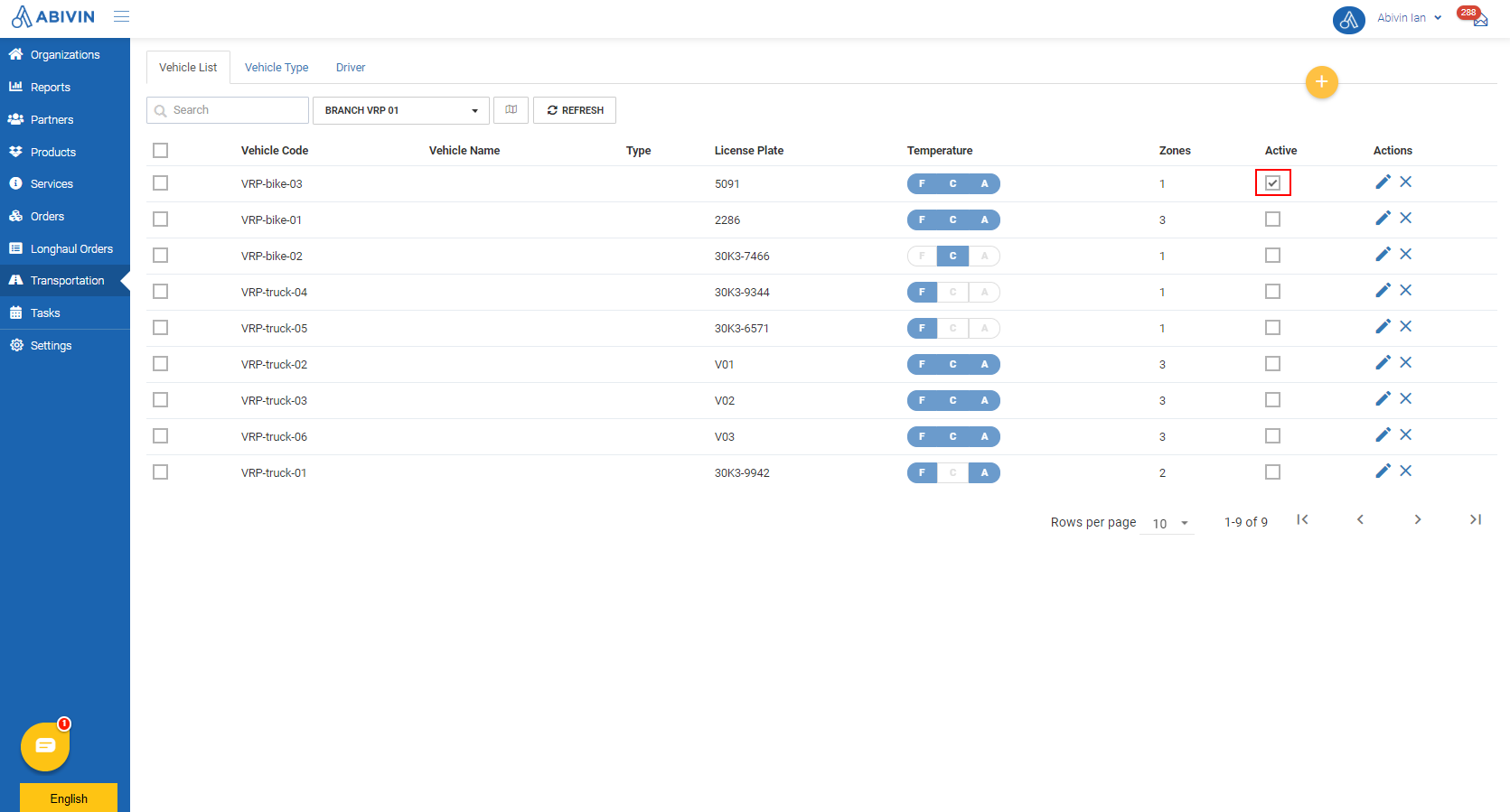
- Note: Inactive barge will not be visible on the Barge Plan Dashboard
View current locations of barges on map
- Right after the Shipment has been assigned to a barge, the mobile device equipped with that barge will be tracked. The GPS information of the mobile device will be sent to the system, enabling the dispatchers to know the current locations of the barges
- The tracking session will only stop after the barge has completed the Shipment and has not been assigned new shipments
- To view the current location of all active barges, follow the steps below:
- Navigate to Transportation > Vehicle List tab
- Click on the Organization filter and select the appropriate Transporter which manages the barges
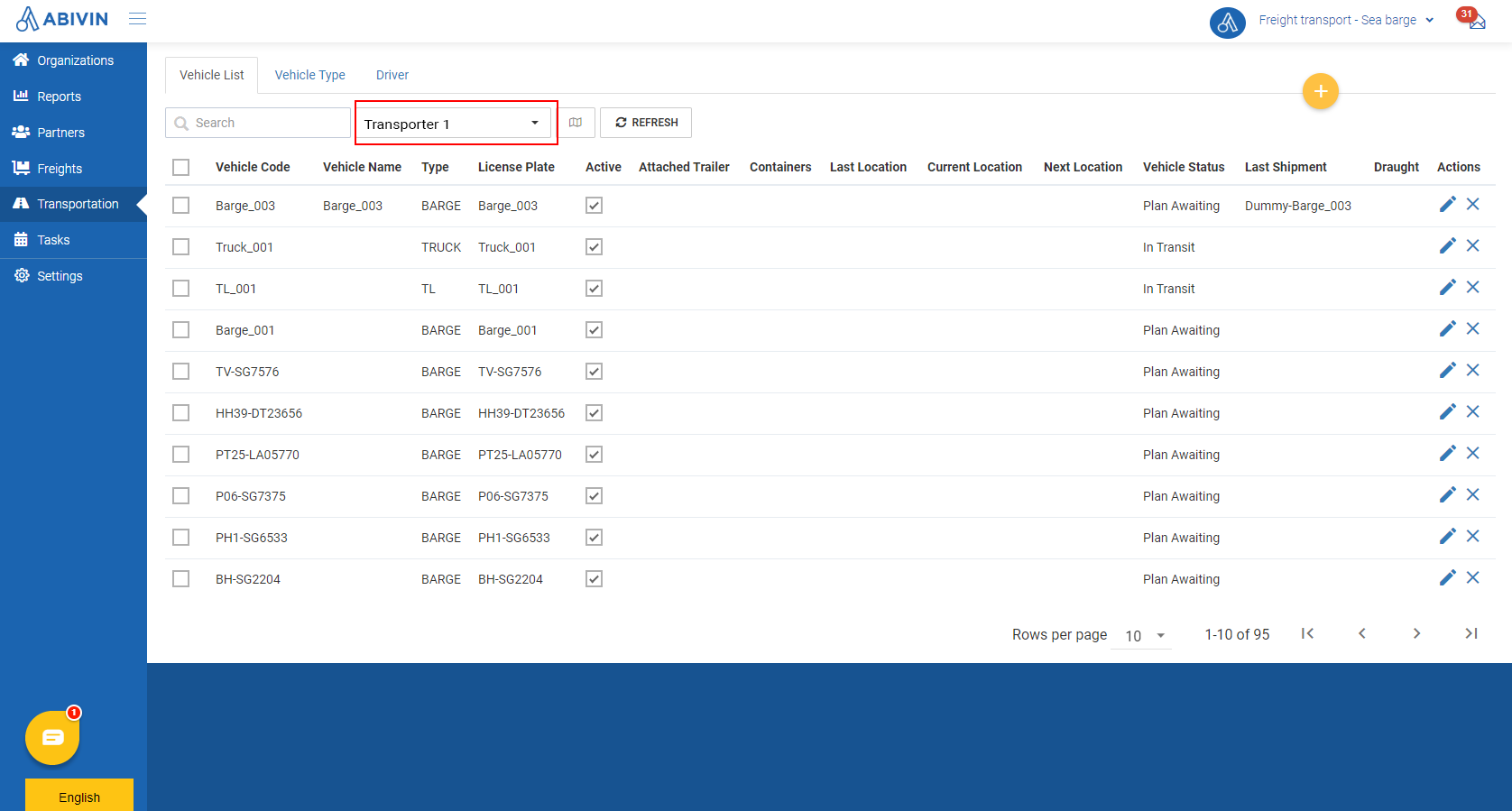
- Click on the View map icon on the toolbar

- You will be directed to the Map screen
- The Map screen will show the current location of all barges under the management of the selected Transporter, along with their status
- Click on a barge's icon will reveal all barges currently at that location. There will be black lines connecting these barges
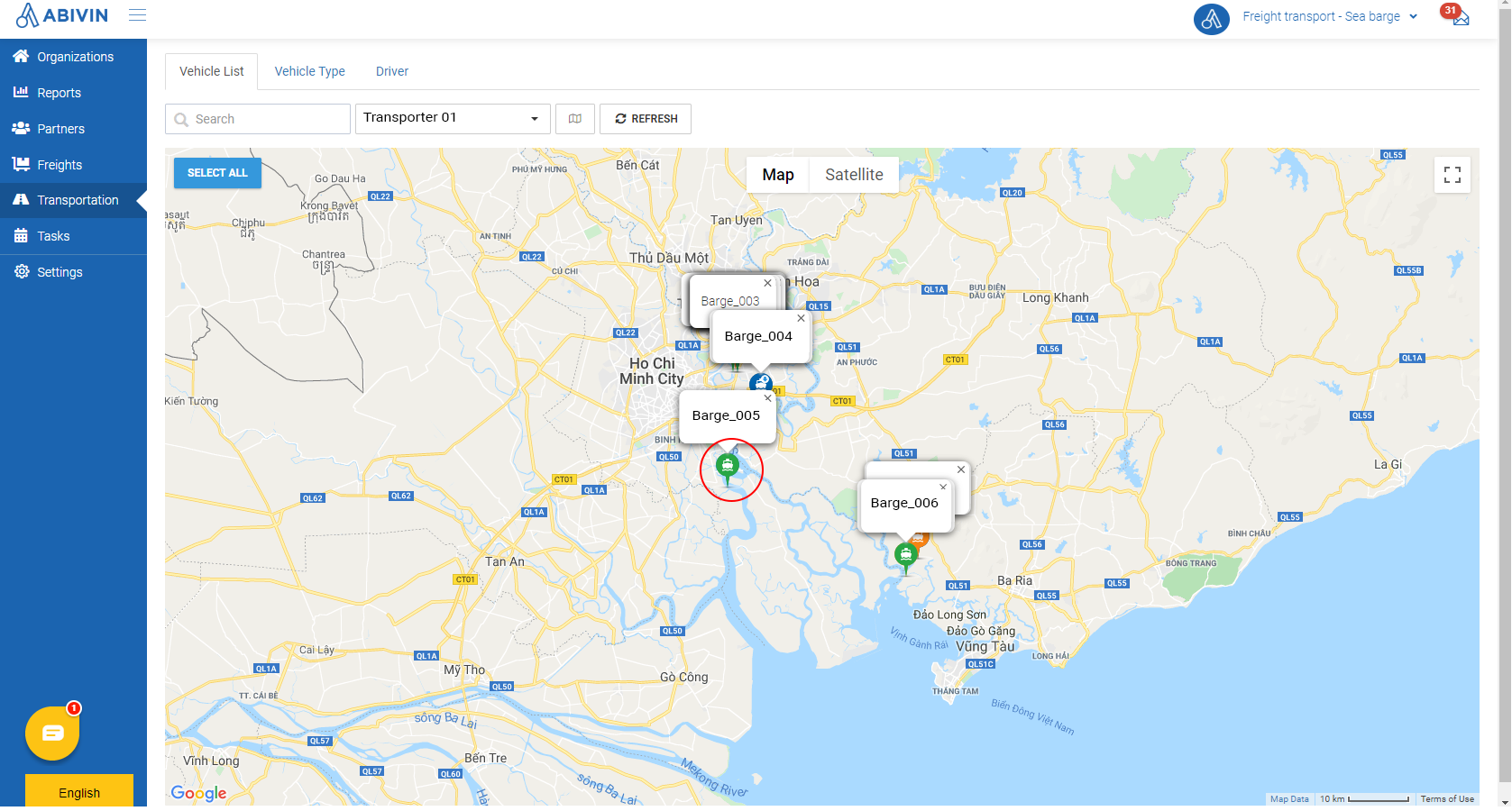
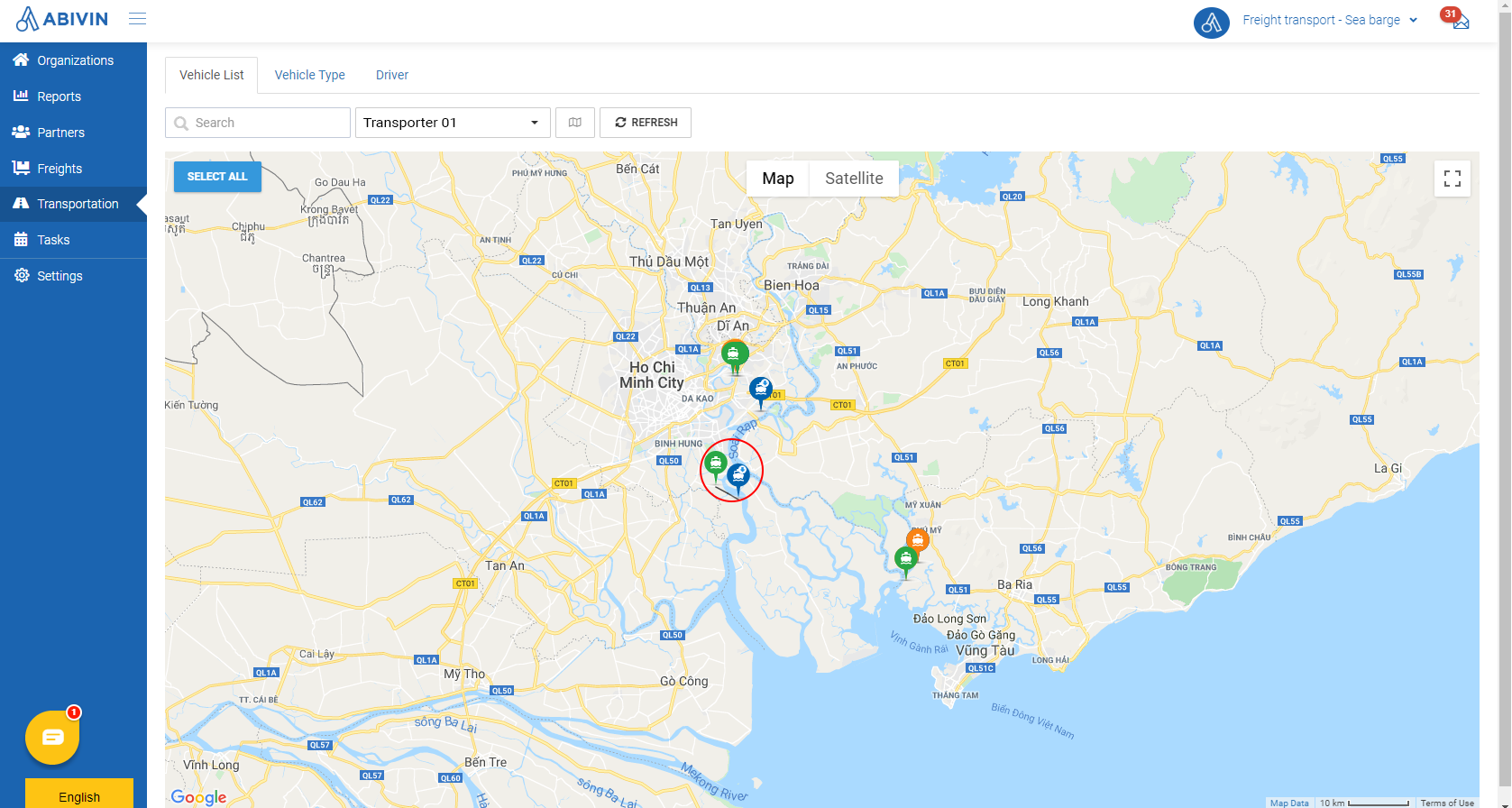
Search for barge
- You can search a specific barge by inputting its Vehicle code into the search bar
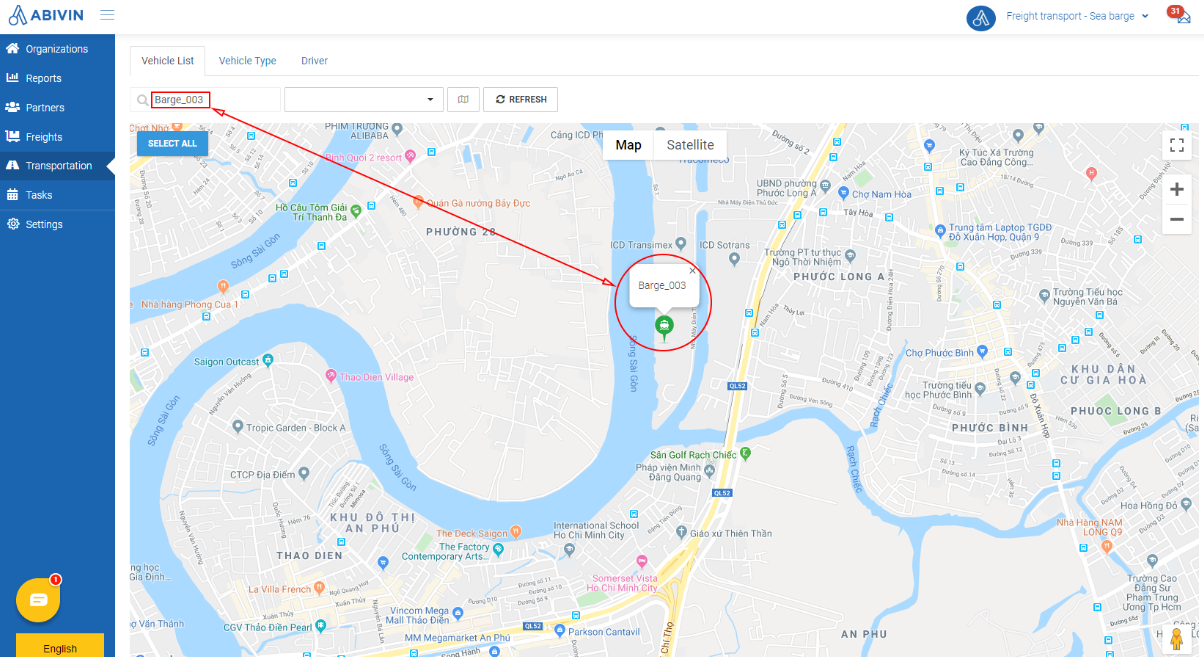
Filter barges by status
- You can filter to show barges based on their respective statuses by following the steps below
- Click on the blue Select All button on the top left of the Map screen
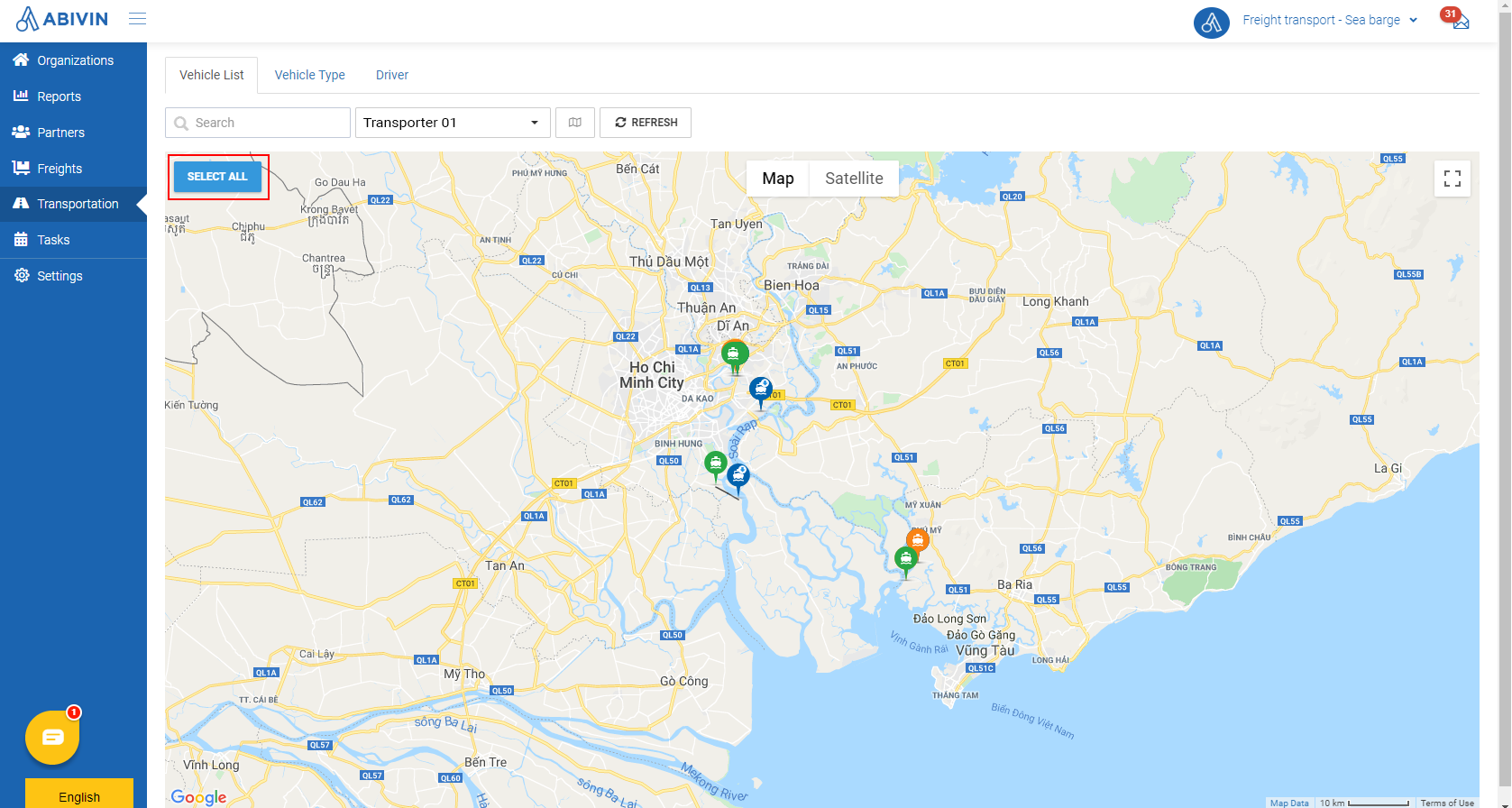
- The barge statuses will be grouped into four groups. Each group will have a distinct color to easily differentiate
Status group title | Status group color | List of barge statuses |
|---|---|---|
Status Group 1 | Green color | Plan Awaiting |
Status Group 2 | Red color | Plan Exists |
Status Group 3 | Orange color | In Transit |
Status Group 4 | Blue color | Line Up Awaiting |
- You can filter the barges whose current statuses fall into a specific Status group by clicking on that Status group title on the menu
- You can click on a barge's icon on the Map screen to view the detail information of that barge

- You can click on Details button to view the container list of the shipment the barge is currently performing
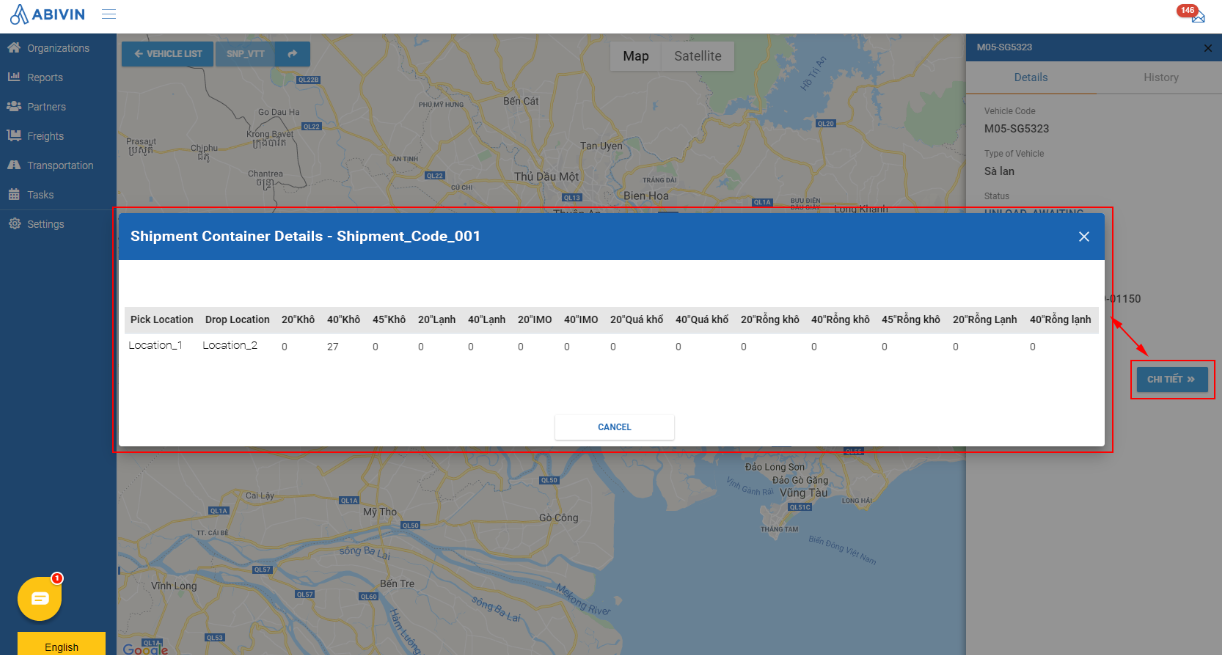
- You can click on the History tab to view the shipments that the barge has performed in the past. The history is divided by dates. You have to click on the date field, choose a date from the drop down calendar
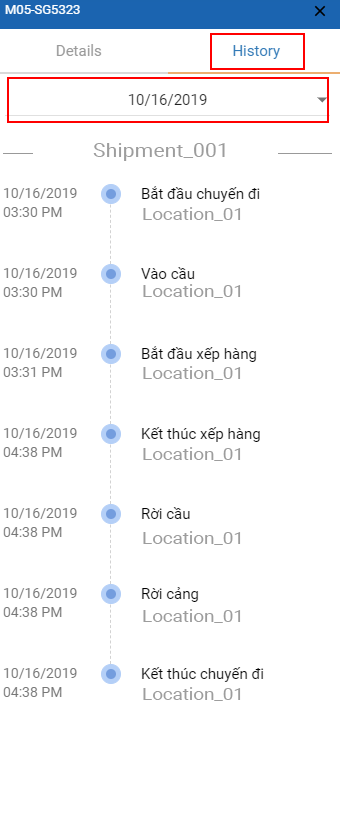
Update Barge Location
- After a barge captain has submitted the task Shipping Started at the first Drop Stop of the Actual shipment on Mobile app, you can update that barge's location. The indicator of such barges is that they have the icon Update Vehicle Location under the column Action

- To update the barge location, you need to click on the icon Update Vehicle Location. Upon clicking, the form Update Location will appear. On this form, the field Vehicle Current Location shows the current location of the barge

- To change the location, click on the field Location, input the code/name of the desired location into the search bar then select the returned value (The location codes/location names are the same as the Customer Codes/Customer Names and can be found under the columns with the same titels in the tab Partners > Customers)
- After the desired location has been selected, you then need to click the button Update. Upon clicking, a confirmation form will appear. Here you can decide whether to: 1. send a request to create NFR shipment to the external TMS by clicking the button Create NFR; or 2. just simply update the barge location on Abivin vRoute Web app by clicking the button Update Vehicle Location Only

- If you click Update Vehicle Location Only, the barge location will be updated right away. If you click Create NFR, a request to create NFR Shipment for the barge will be sent to the external TMS system. If the dispatcher on the external TMS system creates the NFR Shipment, then the barge captain can submit the NFR Shipment on the Mobile app. Two minutes after the NFR request has been sent, if the dispatcher on the external TMS system hasn't created the NFR Shipment, there will be a notification on the top right of the Web app to remind you to contact the TMS dispatcher
Updated about 2 months ago
